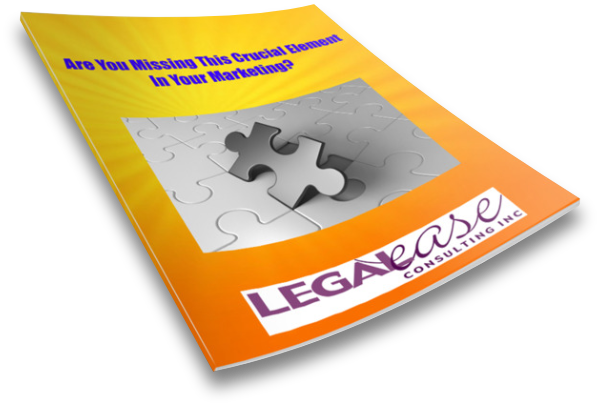I’ve talked before about making sure your website (and every element on your site) has a specific purpose, making sure that your site is focused on your clients and their problems, and showing your customers where to go on your site. Another concept which is related to all of the above is the concept of distraction. Is your site too busy? When looking at the pages on your site, is it unclear where to look first? Are there too many things competing for a visitor’s attention? Is it hard to read the text on your site?
If there are too many things competing for your web visitor’s attention, it distracts from your message. Since most web surfers are looking for information, make sure your site doesn’t compete with the valuable informatioin and education you’re providing on your site. You don’t want to divert your clients’ attention away from the real value of your site – the content you’re providing.
Packaging is important in any marketing materials, and particularly with a website. If the site isn’t attractive, your web visitors may not stay to read your content. But there’s a definite line between attractive and distracting, and that’s a line that shouldn’t be crossed. Some web site owners like to ‘show off’ by using every “cool trick” at their disposal, regardless of whether that tool is appropriate for the particular site. Don’t fall into that trap.
Your website, just like your brochure, the quality of your work and the way your receptionist answers the phone, affects the impression others have of your practice. It’s important to ensure that you make that impression a positive one. Lawyers are in the relationship building business. Those relationships are built on trust. Your website needs to convey that you can be trusted to advise your clients and to help them through their difficulties. If your website’s ‘package’ is distracting or leaves visitors stranded, chances are that it’s detracting from your image as a trusted advisor.
Here are some distracting elements to watch out for on your site:
- Text in all caps. Placing text, even headlines, in all capital letters is difficult to read.
- Text blocks that are too large. Long lines of text are difficult to read. Most web visitors are skimming (at least initially), and large blocks of text can be overwhelming or intimidating and can cause visitors to click away from your page or site. Break up large text blocks by adding subheads, or even just making the first few words or the first line of each paragraph bold, so web visitors can skim through the text and still get the main points. If you capture their interest, they’ll read the rest.
- Broken links. Make sure your links are all working. Nothing is more frustrating than clicking on a link in a website that doesn’t work.
- ‘Fancy’ buttons and links or unclear navigation. Make sure your buttons and links look like buttons and links on your site. There are certain conventions on the internet, and changing them around just confuses visitors. Since underlining on the web is used for links, don’t underline text that isn’t meant to be a link.
- Sideways scrolling. Scrolling down to read text is something most web surfers are used to, and are willing to do. Scrolling sideways is frustrating and distracting. The text in a newspaper, book, or magazine doesn’t go all the way across the page – neither should the text on your site.
- Sites that look good only in one browser. Make sure your site works in all different kinds of browsers. Check colors especially – the color that looks beautiful on your browser may be jarring in another browser. Don’t assume that everything looks the same. There are some colors that are considered ‘web safe’.
- Distracting backgrounds. Trying to make your site look different by using a patterned or colored background? Does it make it difficult to read the site? If it does, ditch the background.
- Inconsistency between pages. Your site should always look like your site. All of the pages on your site should look consistent – they should look like they all belong to the same site. Navigation should always look the same and be in the same place on every page, so visitors alawyas know where to find what they’re looking for.
- Graphics that take forever to load. Is that graphic really important to your site? Can you make it load faster? If it takes too long, many web visitors will just give up and go somewhere else before your site even loads.
- Blinking text. Some law firm sites use blinking text, thinking that it will draw visitors’ attention to an important piece of text. The problem is that even after visitors read the ‘importan’t blinking text, they’re distracted by it, and it prevents them from concentrating on the rest of your text. There are other ways to draw attention to important text by the use of placement, white space, headlines and other techniques. Blinking text just distracts from the rest of the page.
Although your site must have quality content that brings clients and prospective clients to your site and builds credibility, the packaging is important, too. Don’t let distracting packaging overshadow the content on your site.
If you liked these articles, subscribe to my e-newsletter, and you’ll receive new articles in your in-box. The articles in the newsletter are not available to the public – the only way to see those articles is to receive the newsletter.
Already a subscriber? Want to learn how I can help you? Learn more about the products and services I offer by clicking here.

Allison C. Shields
Legal Ease Consulting, Inc
Creating Productive, Profitable and Enjoyable Law Practices

P.S. Found a mistake or a bug? If there’s anything that bothers you about this site, I want to know! Send me an email at Allison@LegalEaseConsulting.com. I want this site to be not just a resource, but a refuge for lawyers. I want you to be comfortable here. So if there’s something that bothers you, please tell me!



